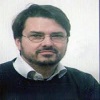
Marco Carotenuto
University of Campania Luigi Vanvitelli, Italy
Title: Mild traumatic brain injury affects sleep macrostructure in children: A polysomnographic study
Biography
Biography: Marco Carotenuto
Abstract
Background & Aim: Traumatic Brain Injury (TBI) may be considered as one of the main causes for childhood morbidity and mortality. TBI increases the risk of psycho-social problems, intellectual disability and cognitive impairment, but the most common consequence of TBI is sleep troubles. Aim of study is to assess polysomnographic findings in pediatric patients with TBI.
Materials & Methods: 37 children with TBI (mean age 9.69+/-1.81, 20 males and 17 females) were included in the study. The control group was composed by 37 children (mean age 9.34+/-1.78, 19 M and 18 F). Exclusion criteria were: psychiatric and neurological disorders, intellectual disability (IQ≤70) and psychoactive drug administration. All children in both group filled out a full overnight polysomnography (PSG). Statistical analysis t-student’s analysis was used to verify the mean differences between groups for PSG parameters. Statistical software package (STATISTICA 8.0, StatSoft Inc.) was used. P value <0.05 were considered as statistically significant.
Results: Children with TIB showed a statistically significant (p<0,001) reduction for TIB (Time in Bed) min, SPT (Sleep Period Time) min, TST (Total Sleep Time)-min, SE (Sleep Efficiency) % , N2 min, N3 min, REM min, N3 spt, REM spt , N2 tst, N3 tst, REM spt and a statistically significant increase in parameters such as SOL (Sleep Latency) min, SS-h (Stage Shifts/h), AWN (awakenings)-h, and WASO (Wakefulness After Sleep Onset) min, N1 min, N1 spt, N1 tst.
Conclusions: Our study shows that pediatric TBI may alter sleep architecture consistently, although further studies are needed. The audience will take away from presentation are: importance of polysomnographic evaluation for pediatric traumatic brain injury (TBI); TBI may affect the sleep macrostructure consistently and; sleep disorders in pediatric TBI may be considered as a mandatory sign to consider and evaluate in TBI management.

